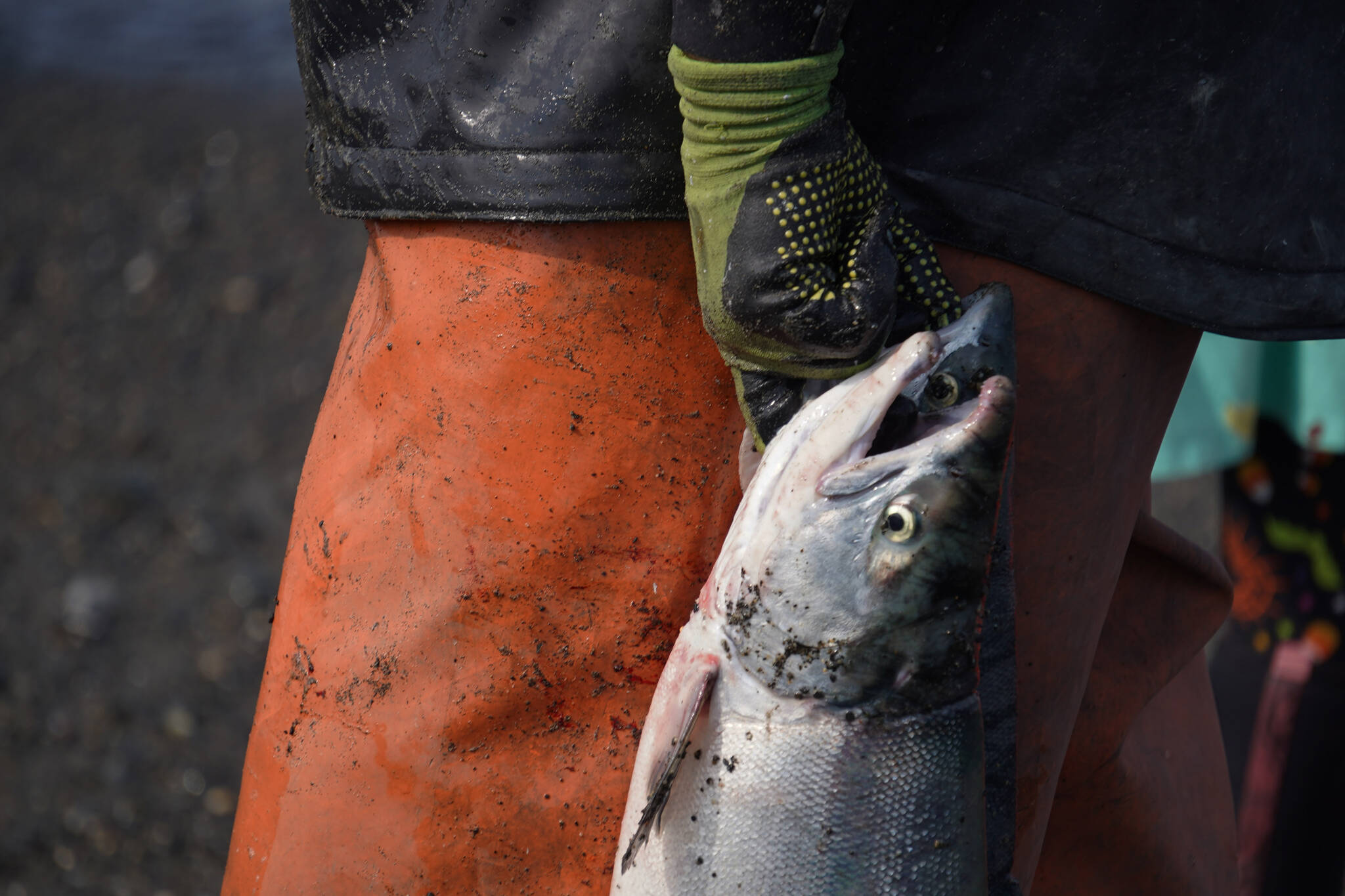Ahead of the completion of a formal process to add dipnets as a legal gear type for commercial set gillnet fishing operations in Upper Cook Inlet’s Central Region, which includes the east side setnet fishery, the Commercial Fisheries Entry Commission in an emergency regulation approved their use for this fishing season.
The State Department of Fish and Game announced in May that the commission was beginning the regulatory process for adding the gear type to the local commercial fisheries. That move followed the approval of commercial dipnetting in the ESSN by the State Board of Fisheries in March.
A public comment period for the commission’s proposed regulation ended Wednesday, ahead of a public meeting set to be held in Juneau on June 25.
The department noted that, due to the time required for the process to play out, the use of dipnets would likely not be approved and legal until a few weeks after the fishery could have been opened.
The commission, however, only a week after the department’s announcement, on May 21 held an emergency meeting where they approved an emergency regulation that allows the use of dipnets under set gillnet permits in both Cook Inlet and Lower Yukon River fisheries, “as authorized by the Board of Fisheries.”
The first possible openings described by the department allow for the use of dipnets in the commercial set gillnet fisheries when set gillnet fishing is closed and “based on abundance” of sockeye salmon. Up to three 12-hour periods of commercial dipnetting “may” be allowed each week from June 20 to July 31.
Retention of king and coho salmon is prohibited and they must be immediately released “unless the fish is mortally wounded or dead.” Those fish must be brought onboard and reported under new regulations also implemented by the board in March within the Kenai River Late-run King Salmon Stock of Concern Action Plan.
Each permit holder may operate up to four dipnets at a time, with each being operated either by the permit holder or licensed crew. Dipnets may not be more than 5 feet in diameter, the depth of the bag must be at least one-half of the diameter, and no portion of the bag may be constructed of webbing that exceeds a stretched measurement of 4 and a half inches. Each net must be attached to a single, rigid handle and be operated by hand.
A notice from the commission says that the gear type is authorized from May 22 until Sept. 18, under the emergency regulation, but that a permanent regulation change will still be considered at the June 25 meeting. That meeting will be available via videoconference but will not accept public comment.
“The commission intends to make the emergency regulation permanent,” the notice reads.
Though public comment for the permanent regulation closed this week, public comment on the emergency regulation will be accepted through 5 p.m. on June 21.
Public comments on the changes, including regarding potential costs to users, the announcement said, can be mailed to the commission or submitted at 907-789-6170, dfg.cfec.publicquestions@alaska.gov, or the Alaska Online Public Notice System.
For more information about the Board of Fisheries, including proposals, reports and audio from the Upper Cook Inlet Finfish meeting, visit adfg.alaska.gov. For more information about the Commercial Fisheries Entry Commission, including the emergency regulation, visit cfec.state.ak.us.
Reach reporter Jake Dye at jacob.dye@peninsulaclarion.com.

